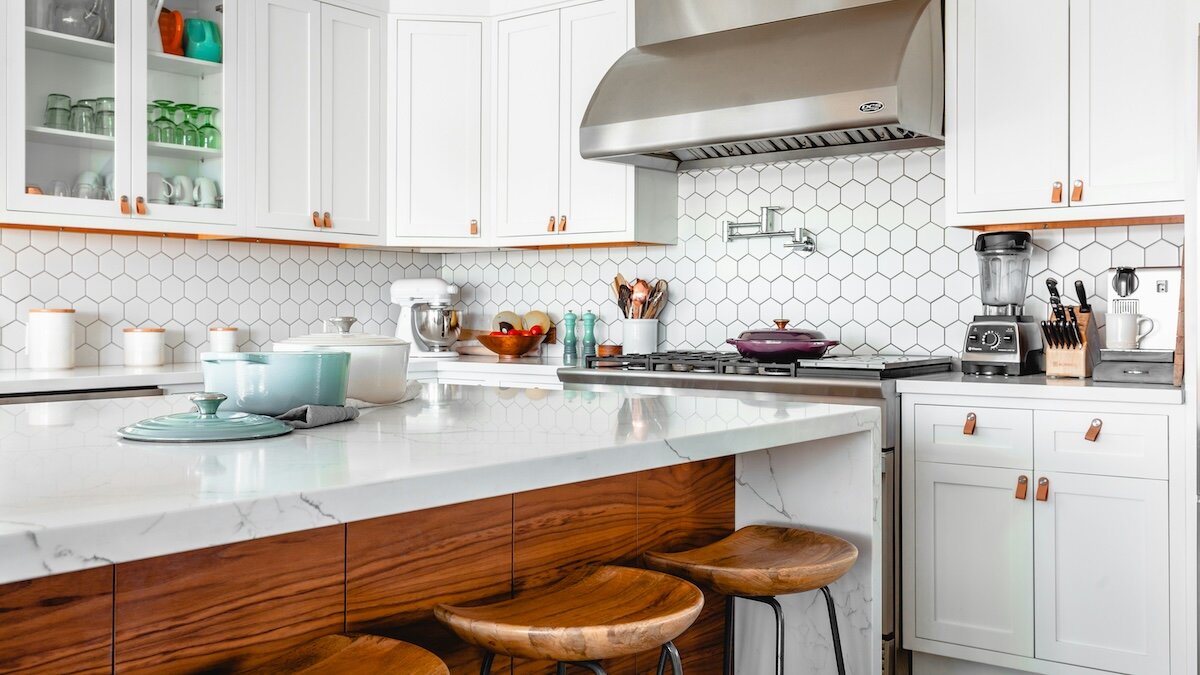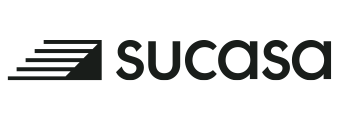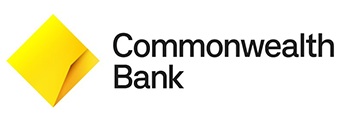Australia is one of the most expensive countries in the world in which to buy a home. It's no wonder then that the Great Australian Dream remains just that, a dream, for many.
However, challenges often breed innovation, as is the case with OwnHome.
The Aussie fintech promises a pathway to homeownership for those who can't access government schemes or the 'Bank of Mum and Dad'.
It can provide the 20% deposit a purchaser needs to enter the market without forking out for Lenders Mortgage Insurance (LMI). The insurance product exists purely to protect lenders providing low-deposit home loans, but the borrower is the one who pays for it – and it often adds up to tens of thousands of dollars.
"It's the lived experience of all aspiring homeowners," OwnHome CEO and co-found James Bowe told the Savings Tip Jar podcast.
"We're seeing the goalposts continue to move further and further out of reach, in terms of what's required for a 20% deposit and stamp duty.
"If you find yourself either unable to access government subsidies, because you earn too much to access the [Home Guarantee Scheme] … or you didn't choose your parents well, then you'll want to understand, 'What are my options?'
"That's where OwnHome steps in."
OwnHome is backed by CommBank's venture capital leg x15 Ventures and other investment vehicles such as Square Peg.
So, what's the catch? Let's dive into the inner workings or the service and the benefits and drawbacks it offers home-owning-hopefuls.
How does OwnHome work?
If you've previously come across OwnHome and decided it wasn't for you, it might be worth a second glance. The business has transformed in recent times, shifting from what was essentially a rent-to-own model to something else entirely: A deposit loan provider.
Here are the major draws on offer from OwnHome:
-
OwnHome provides loans for deposits of up to 20% of a property's value
-
Eligible buyers pay OwnHome an upfront fee of up to 2.2% of the property's value
-
They can then secure a traditional home loan to finance the remainder of their property purchase
-
The deposit loan provided by OwnHome is repaid over 15 years at a higher interest rate than a traditional home loan, with borrowers able to make extra repayments to speed up to process
So, if you're looking at a home valued at $800,000, you might only need $17,600 (plus transaction costs) to secure it with the help of OwnHome.
Also worth noting is the fact that the fee charged by OwnHome to provide the deposit might be lower than 2.2% of the property's value and could be as little as 1.1%, depending on the size of the deposit a borrower brings to the table.
How much could OwnHome save a first home buyer?
The ability to dodge LMI and secure a lower interest rate, not to mention the option to climb onto the property ladder sooner, are the major drawcards on offer from OwnHome.
Rarely do traditional home loan lenders allow a person to enter the market with a deposit of less than 5% of their property's value.
Indeed, many of those that advertise home loans for borrowers with loan-to-value ratios (LVRs) of more than 95% do so on the proviso that the borrower has saved a 5% deposit and rolls LMI into the mortgage, thereby boosting their LVR above 95%.
Let's look at two borrowers, one who turns to a traditional home loan and the other to OwnHome, each purchasing a home for $980,000 with the smallest amount of savings outwardly possible, plus other transaction costs like stamp duty and conveyancing fees.
One might go direct through a lender that offers 98% LVR home loans (in the case of this example, that is BankWest – one of few that advertise such mortgages) while the other could buy with the help of OwnHome and secure an ING home loan with an 80% LVR:
|
BankWest |
OwnHome + ING |
|
|---|---|---|
|
Minimum savings required |
$63,000 |
$20,000 |
|
LMI (BankWest)/Low Deposit Premium (OwnHome) |
$42,578 |
$19,800 |
|
LVR (at point of home loan finance) |
98% |
80% |
|
Total upfront (excluding transaction costs) |
$105,578 |
$39,800 |
All figures are approximate and don't include costs such as stamp duty or conveyancing fees
As shown in this scenario, turning to OwnHome could potentially save a buyer upwards of $65,700 at the point of purchase.
Of course, that's not indicative of all scenarios. If you're considering turning to the fintech, it would be wise to weigh your options carefully.
OwnHome argues that the buyer using its service would also be better off after they've secured their new pad. Since they'll be borrowing with a lower LVR, they might be eligible for a lower interest rate.
Right now, BankWest's Simple Home Loan product advertises an interest rate of 8.77% p.a. for borrowers with LVRs of 95% to 98%, while ING's Mortgage Simplifier product advertises a rate of 6.14% p.a. for borrowers with LVRs of 80% or less.
The impact of such a difference on a person's regular repayments, including the interest rate charged on the funds borrowed from OwnHome, could be:
|
BankWest |
ING + OwnHome |
|
|---|---|---|
|
Interest rate* |
8.77% p.a. |
6.14% p.a. (ING) + 13.50% p.a. (OwnHome) |
|
Monthly repayments (for the first 15 years)** |
$7,563 |
$4,869 (ING) + $2,337 (OwnHome) Total: $7,206 |
*Interest rates are correct as of the time of writing and could change at any time.
**assuming interest rates remain the same over the period.
And what if you choose to continue saving until you reach that magic 20% number?
Well, if house prices keep rising in the meantime, you might miss out on the potential wealth gains associated and find yourself chasing that elusive, hefty deposit.
Is OwnHome always a cheaper way to enter the market?
The financial positions of Australians vary markedly. Glancing around the market at the time of writing, there are quite a few situations in which it appears a homebuyer would be better off going down the more traditional route of financing their purchase.
Take, for instance, two first home buyers who each have a 5% deposit saved, plus LMI or the Low Deposit Premium and other transaction costs, and both plan to buy a $600,000 home.
They might find their respective situations look like this:
|
Buyer #1 pays LMI |
Buyer #2 borrows 15% of their property's value ($90,000) from OwnHome |
|
|---|---|---|
|
Home loan product |
G&C Mutual Momentum Home Loan (with 95% LVR) |
OwnHome + G&C Mutual Momentum Home Loan (with 80% LVR) |
|
Deposit |
$30,000 |
$30,000 |
|
LMI / Low Deposit Premium* |
$31,000 |
$12,000 |
|
Total upfront (excluding transaction costs) |
$61,000 |
$42,000 |
|
Interest rate** |
6.19% p.a. |
6.09% p.a. (G&C Mutual) + 13.5% p.a. (OwnHome) |
|
Monthly repayments (for the first 15 years)*** |
$3,487 |
$2,906 (G&C Mutual) + $1,168 (OwnHome) Total: $4,074 |
*LMI as per Your Mortgage LMI Calculator, Low Deposit Premium assumed to be 2% of property value.
**Interest rates are correct as of the time of writing and could change at any time.
***assuming interest rates remain the same over the period.
Looking at the above table, it's clear that both borrowers face benefits and drawbacks due to their decisions.
Borrower #1 has paid $19,000 more upfront than borrower #2, but borrower #2's monthly repayments are close to $590 higher.
It would take less than three years for borrower #1 to recoup the difference in upfront fees from realising lower repayments.
This demonstrates the importance of weighing all the pros and cons and contemplating how turning to a product like OwnHome could positively or negatively impact your homeownership dreams before making any final decisions.
Some of the 95 LVR home loans out there
If you're looking to enter the property market with a 95 LVR, these home loans might pique your interest.
| Lender | Home Loan | Interest Rate | Comparison Rate* | Monthly Repayment | Repayment type | Rate Type | Offset | Redraw | Ongoing Fees | Upfront Fees | Max LVR | Lump Sum Repayment | Extra Repayments | Split Loan Option | Tags | Features | Link | Compare | Promoted Product | Disclosure |
|---|---|---|---|---|---|---|---|---|---|---|---|---|---|---|---|---|---|---|---|---|
5.29% p.a. | 5.33% p.a. | $2,773 | Principal & Interest | Variable | $0 | $530 | 90% |
| Promoted | Disclosure | ||||||||||
5.19% p.a. | 5.20% p.a. | $2,742 | Principal & Interest | Variable | $0 | $180 | 80% | |||||||||||||
5.89% p.a. | 6.16% p.a. | $2,962 | Principal & Interest | Variable | $0 | $790 | 98% | |||||||||||||
5.89% p.a. | 5.95% p.a. | $2,962 | Principal & Interest | Variable | $0 | $799 | 95% | |||||||||||||
7.09% p.a. | 7.10% p.a. | $3,357 | Principal & Interest | Variable | $0 | $450 | 95% |
What buyers should consider before turning to OwnHome
OwnHome's model may provide a promising pathway to homeownership with a far lower upfront cost.
However, there's always another side to a coin.
Here are some considerations and potential drawbacks that buyers should be aware of:
1. Higher interest rates
The money borrowed from OwnHome for the deposit is typically subject to a higher interest rate than a traditional home loan. While you may avoid LMI, you could end up paying more in interest over time.
2. Different fees
OwnHome charges a fee for providing the deposit. This fee could be more or less than the cost of LMI, depending on how much you're borrowing and the LVR you plan to bring to the table.
3. Strict eligibility criteria
OwnHome has a relatively strict eligibility criteria that many homebuyers simply won't be able to meet. Those turning to the scheme must:
-
Have a credit score of at least 600
-
Be buying in or nearby a metropolitan area
-
Meet income thresholds, which are based on the areas you're hoping to buy and whether you have any dependants. OwnHome notes it's best suited to those who earn more than the income limits for the Home Guarantee Scheme – $125,000 for individuals and $200,000 for households
-
Much be a permanent resident or citizen of Australia
4. Minimum loan sizes
While OwnHome can provide as little as 1% of the value of a property for a deposit, its minimum loan size is $60,000. So, if you're just a hair - or less than $60,000 - away from your goal, it mightn't be the right choice for you.
5. Market risks
Borrowing with a high LVR is, by nature, risky. If property prices were to fall, a person with a high LVR doesn't have as much wiggle room as another with a lower LVR. They might even find themselves owing more than their property is worth.
Other ways to enter the property market with a low deposit
You'd be forgiven for finding OwnHome's offering attractive. After all, the property market can be brutal.
If you're struggling to get together the 20% deposit required to enter the market without LMI, or even the 5% deposit typically needed to secure a home loan, you have more than one option.
Government schemes and grants
Of course, one way to enter the market without a significant deposit is by taking advantage of supports offered by Australian state and federal governments.
Take the Home Guarantee Scheme, for example. It allows a first home buyer to purchase a property with a deposit of as little as 5%, or 2% if they're a single parent, without paying LMI.
Meanwhile, the anticipated Help to Buy scheme is expected to see the Federal Government chipping in as much as 40% of a home's purchase price in a shared equity model.
However, most government schemes have income and property price caps. For instance, to utilise the Home Guarantee Scheme, an individual needs to earn less than $125,000 a year, a couple less than $200,000, and, if they're buying in Sydney, they need to spend less than $900,000 on their property.
OwnHome aims to fill the gaps, targeting those who don't qualify for government schemes.
Find a home loan guarantor
If you can take advantage of a guarantor, doing so could be a smart move.
Many lenders will let a person take out a home loan with a minuscule, or even non-existent, deposit if someone more established is willing to go guarantor for them – this person is often a parent or family member.
A home loan guarantor essentially promises a lender that they'll be responsible for your mortgage if you default, thereby removing much of the risk you might otherwise represent.
Other specialty lenders
There are also certain lenders out there that specialise in providing low deposit home loans.
Take Sucasa, for example. It operates in a similar way as OwnHome, but the entire process is completed in-house.
It provides hopeful borrowers with two loans – one that operates as a deposit and another as a traditional home loan. The loan that acts as a deposit typically carries a higher interest rate than the traditional mortgage.
Rentvesting
Finally, if you've put together a deposit but it isn't enough to afford you a home in the area you want to live, you might consider rentvesting as a way onto the property ladder.
Rentvesting means to invest in property while you rent.
If you live in, say, the Sydney suburb of Bondi, where the median house price is close to $4 million as of April 2024, buying might be out of the picture.
But what if you can't (or don't want to) move out of the area? In that case, you might consider renting in Bondi and buying further away, perhaps in an outer Sydney suburb such as Campbelltown, where the median house price was $850,000 in April 2024.
Image by roam in color on Unsplash









Share